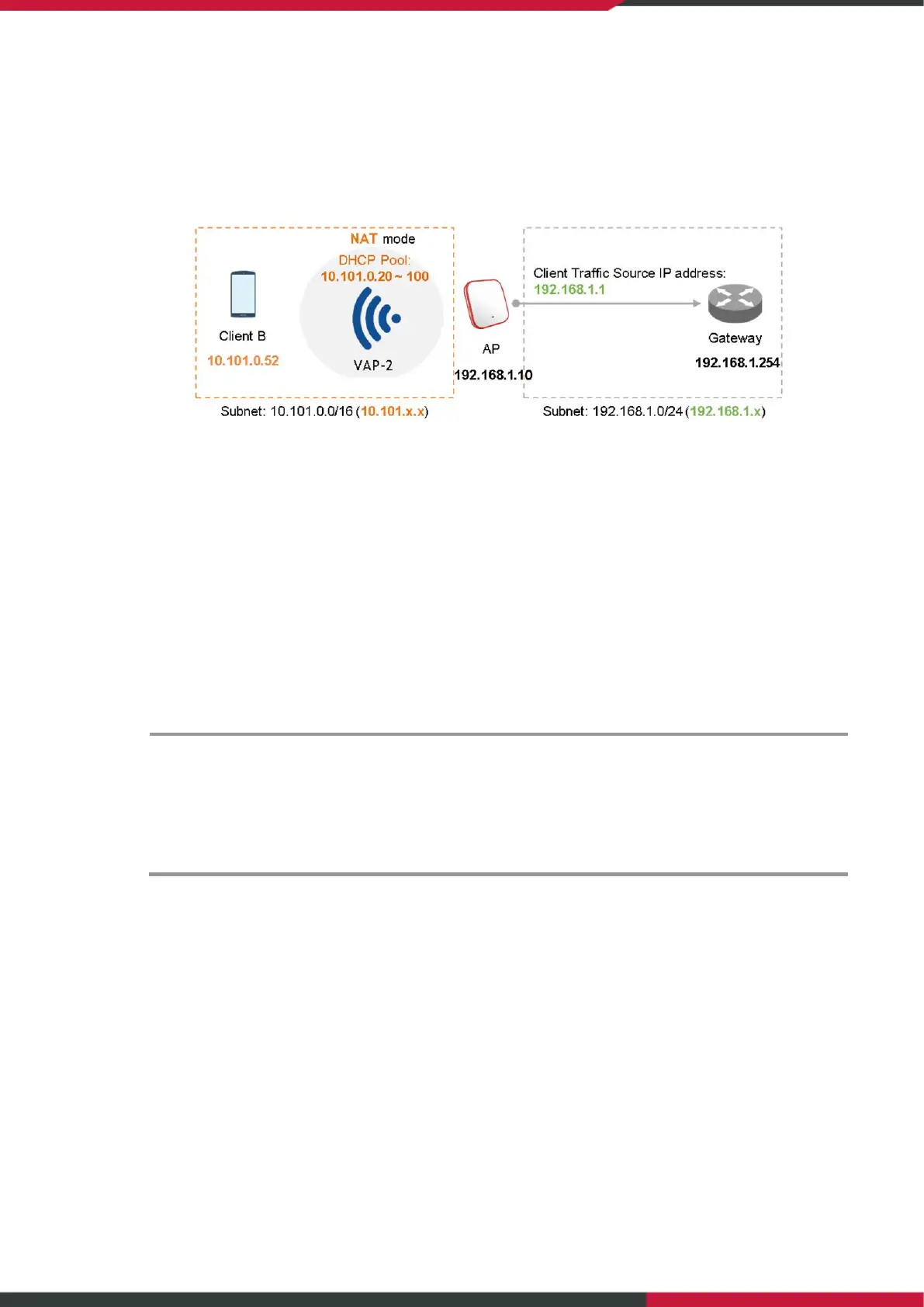User Manual
Enterprise Access Point
9
- NAT mode: the VAP operates like a Network Address Translation (NAT) device with a built-in
DHCP server on this SSID such that client devices will be assigned a dynamic IP address from the
configured DHCP pool on this SSID. After NAT conversion, the source IP address of client traffic
seen by the uplink gateway/switch will be the IP address of the AP (in this case, 192.168.1.10, as
shown in the diagram below).
- VLAN ID: Per-SSID VLAN tagging function – when enabled, clients’ traffic which enters the AP
through this SSID will be tagged with the configured VLAN ID.
- DHCP Profile: Built-in DHCP Server profile; IP settings of DHCP Server are under Home > System >
DHCP Server.
- CAPWAP Tunnel Interface: Three states indicating the connectivity between AP and Controller,
when AP is managed by Controller
• Disable (No Tunnel): the AP is operating with no CAPWAP Tunnel connection to the
Controller
• Split Tunnel: the AP passes only “control” traffic to the Controller via the CAPWAP Tunnel;
i.e. “data” traffic will go out locally without passing through the Tunnel
• Complete Tunnel: the AP passes both “control” and “data” traffic to the Controller via the
CAPWAP Tunnel
- VLAN ID is supported only when the VAP is in Bridge mode.
- DHCP Profile and DHCP Server are activated only when the VAP is set to NAT
mode.
- If the VAP is in NAT mode, the CAPWAP Tunnel Interface will only work in two
states:
Disable (No Tunnel) or Split Tunnel.
